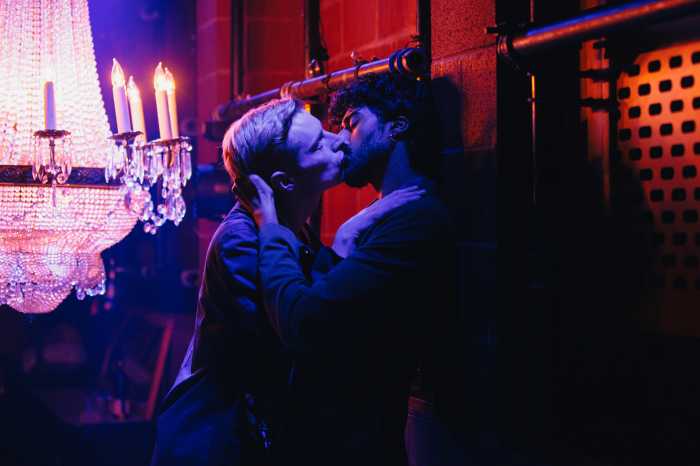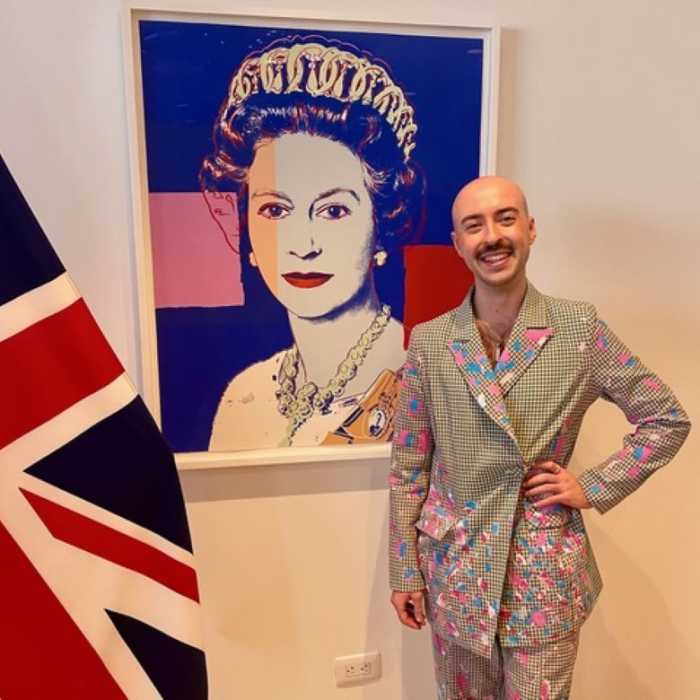Handel and Britten cast spells at Santa Fe Opera.
By: DAVID SHENGOLD | Santa Fe ventured two works new to the festival, in keeping with its ongoing explorations of the baroque and of Britten. “Radamisto” (July 23) was given — more or less — in its third, 1721 edition, which witnessed the title role crafted for Senesino, the Italian alto castrato, and the character of Fraarte omitted.
Harry Bicket made cuts, but he respected the da capo structure and the numbers heard were heard fully — though the audience boorishly applauded after several “B sections.” Bicket's conducting of the orchestra, reduced but augmented with a theorbo, was crisp and stylish.
David Alden's staging elicited more equivocal reactions. Relationships were intelligently delineated, but there was far too much writhing on the floor and Ortrud-like pressing against the rear walls. Couldn't anyone dare to tell the director that this plastic vocabulary is simply ineffective?
Alden evidently feels that da capo repeats are not occasions for greater psychological intimacy; he cut into every single one, with gratuitous scenery moving or non-singing characters' upstaging business. Three characters were treated with maximal disrespect. Farasmene, the hero's hapless father, was mauled, beaten, tied up, and dragged; nor was Kevin Murphy given any solo music.
His daughter Polissena, unbeloved wife of the tyrant Tiridate, was dressed as Carmen Miranda imitating Erna Berger's Zerlina. Laura Claycomb took pains to exhibit her great skill in the upper register, with interpolations beyond the point of taste. Her timbre is anonymous, and between them Alden and Claycomb did not present a comprehensible characterization.
Worst of all, Alden presented the noble prince Tigrane, admirably voiced by fleet, fresh soprano Heidi Stober, as the kind of “uncool” buffoon figure who finds his way into too many Regie stagings, with a hideously unflattering costume – clumsy shoes, disfiguring glasses, a silly necktie, and an ugly wig. He bore some resemblance to King Farouk.
Visually, we were far from Thrace and Armenia in the reign of Claudius, with the aesthetic drawn largely from the Indo-Persian Mughal Empire. Apart from Tigrane, Gideon Davey's costumes were ornate and spectacular, with fantastic silhouettes and colors. His sets were, however, tiring to the eye, especially the final scenes' dimmish mirrored walls.
The two warring brothers-in-law dominated the stage. David Daniels, in stupefying form both in exhilarating coloratura and in long-lined legato enchantment, reaffirmed his status as one of the great Handelians of our time. Luca Pisaroni, entering fully into Alden's (literally) bloodthirsty monster concept of the tyrant, showed the advantage of native Italian in his electrifying recitatives and handled his bravura arias with flair.
Replacing Christine Rice at all performances, Deborah Domanski looked lovely in her Lakmeish costumes. But, frequently pushing her tone out of focus and with evident register breaks, the young mezzo lacked the technical finish for Zenobia's difficult music.
If “Radamisto” was a only qualified success, “Billy Budd” (July 25) proved pretty much an unalloyed triumph in Paul Curran's straightforward, masterly staging. The interactions of the three leading characters were clearly presented on a background informed from the start by the physical and mental cruelty under which the HMS Indomitable operated.
The one conspicuous lapse was our not seeing Vere enter the cabin for the mysterious final colloquy with Billy; otherwise, Robert Innes Hopkins' set proved ingeniously versatile.
Teddy Tadu Rhodes made both his festival and role debuts as Billy. Physically, he was superbly convincing; his fine acting captured rough playfulness and anger, qualities that some baritones miss in presenting Melville's “beautiful sailor” as angelic and sanitized throughout. The occasional top note was occluded, but overall the New Zealander sang very well, especially in his final monologue.
Peter Rose made an imposing Claggart — a kind of gay, nautical Scarpia, melodramatic at moments but closely observed as to gesture and stance – and though his extreme low tones were wanting in moments like “Let him crawl,” he brought off the character with distinction.
But the great achievement of the production was the incandescent Vere of William Burden, another new assumption — words superbly uttered and judged wedded to an affecting silvery tone used with expert dynamic shading. Only in his mid-40s, this outstanding tenor has staked superlative claims to Britten's Vere and Aschenbach — first heard at Glimmerglass 2005 — roles he can sing for decades.
Depth casting found Vere's brother officers played with incisive artistry and solid vocalism by veterans Timothy Nolen and Richard Stilwell — the Met's first Budd in 1978, whose Santa Fe career began with Pelleas in 1972. Among the many cameo parts, Keith Jameson's superb Novice stood out. Edo de Waart presided over a detailed, somewhat unhurried reading; only occasional sharping by the brass intruded. Susanne Sheston's men's chorus was excellent.
Next season at Santa Fe promises several productions sounding worth the trip — Paul Moravec's new opera based on Somerset's Maugham's “The Letter,” with terrific out diva Patricia Racette stalking through Bette Davis' dangerous dame part; the fabulous Gluck “Alceste” with the equally fabulous Christine Brewer opposite Paul Groves; plus Natalie Dessay's first-ever Violetta, with her character bass-baritone husband Laurent Naouri's eyebrow-raising casting as Germont.
David Shengold (shengold@yahoo.com) writes about opera for many venues.

































